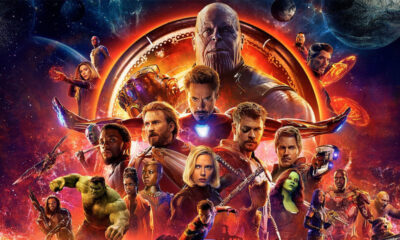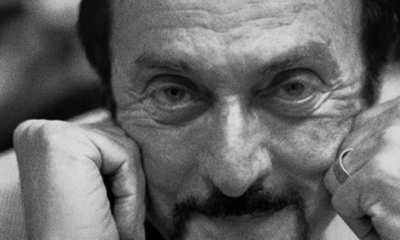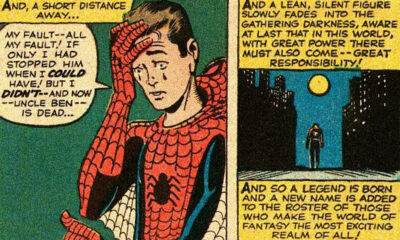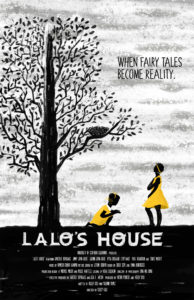Filmmakers
Mirror Mirror: An Exploration of Self-Awareness in Recent Hollywood Films
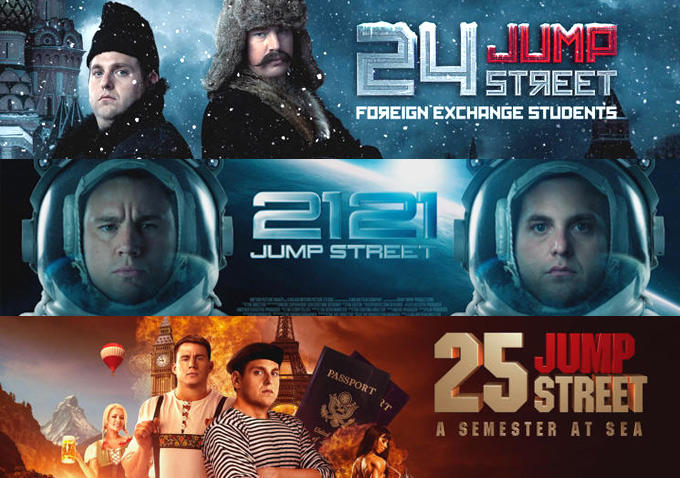
well the phrase that signals the beginning of the end: “They’ve become self-aware.” Now I’m no John Connor, but I am here to warn you that much like Skynet, movies have become more self-aware than ever. Furthermore, like their human creators, they’re neurotically self-critical. Now of course, movies that are aware that they’re movies are nothing new. Wes Craven’s Scream comes to mind as a horror movie that pokes fun at all the common tropes of the genre. And there have been plenty of movies about the movie industry that satire or critique certain elements or trends. 1987’s Hollywood Shuffle pokes fun at the challenges of African-American actors in Hollywood and 2006’s Christopher Guest film For Your Consideration is a very funny satire about the effect that Academy Awards buzz has on actors. 2014, however, featured three widely released films that took a uniquely self-aware approach to make a scathing critique of Hollywood’s current infatuation with movie franchises. I’m talking about 22 Jump Street, Birdman, and Top Five, which respectively take on our culture of sequels, our addiction to superhero movies, and the prevalence of dumb money-making comedies.
2012’s 21 Jump Street was a tongue-in-cheek film adaptation of the 1980s TV drama of the same name. It had a few jokes that poked fun at its TV roots, but for the most part was a straightforward comedy about a mismatched police team sent undercover as high school students to bust a local drug ring. Due to its enormous success, as tends to happen in Hollywood, a sequel was ordered. What arrived in theaters in 2014, however, was more than just a sequel. It was essentially a sequel about sequels. From the opening scene of the movie, the actors on screen call attention to the fact that they’re in a sequel and were going to follow the same basic formula as the first movie. The police chief tells his undercover officers to “do the exact same thing as last time” to ensure that “everyone is happy.” As the movie progresses, they hammer this joke home over and over, culminating in a credit sequence featuring previews to future sequels in the series, 23 Jump Street, 24 Jump Street, and so on. This joke yields laughs, but also a subliminal sense of terror because it seems totally plausible that they would in fact make all those sequels. With a built-in audience and a brand already well-developed, why wouldn’t they? The film makes an important point about Hollywood’s obsession with cranking out sequels and building franchises instead of focusing on new and original material. In his excellent analysis of Hollywood’s franchise obsession, Mark Harris of Grantland points out that of the films slated to be released in the next 6 years, no less than 150 of them will be sequels or franchises. Let that sink in. If only a cyborg from the future could come back in time and stop that from happening…
22 Jump Street cleverly brings attention to this troubling trend, but at the same time, it doesn’t avoid becoming the butt of its own joke. One wonders if the need to constantly remind viewers that it’s aware of its own shortcoming (as a repetitive sequel) is simply a tactic to deflect criticism from others. Like an insecure person making self-deprecating jokes to avoid getting made fun of, there’s an air of anxiety running through the movie, a desperation to show that they’re in on the joke and are therefore exonerated for perpetuating that which they wish to expose. But the movie is undeniably funny, and if that’s the ultimate goal, does this earn the filmmakers a free pass? The movie walks a fine line of criticizing an element of Hollywood culture while also being a part of the problem.
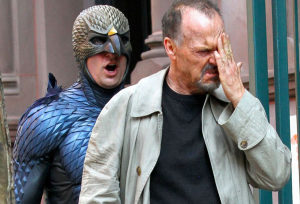
Alexander Gonzales Innaritu’s Birdman tackles another issue plaguing Hollywood today – our addiction to superhero films. The plot of the film follows Riggan Thompson, played by former Batman Michael Keaton, as he tries to put on a respectable Broadway play to shed himself of the superhero image he’s become so famously associated with. If your meta alert is going off, it’s working fine because yes, this is another case of self-aware filmmaking where to fully appreciate the movie on all its levels, the viewer has to be aware that he or she is watching a movie. Seeing Keaton show off his acting chops playing Riggan, who in turn is showing off his acting chops in his Broadway play, one can’t help but appreciate the way that art is imitating life, and vice versa.
One scene early in the film brings attention to a serious problem that superhero franchises create — the dearth of good actors available because they’re all tied up in one franchise or another. While searching for a last minute replacement for an actor in his play, Riggan goes through a list of names with his manager Jake:
RIGGAN: Find me an actor. A good actor. Philip Seymour Hoffman…
JAKE: He’s doing the third Hunger Games.
RIGGAN: Michael Fassbender?
JAKE: Doing the prequel to the X-Men prequel.
RIGGAN: What’s his name? Jeremy Renner…
JAKE: Who?
RIGGAN: The… the Hurt Locker guy.
JAKE: Yeah. He’s an Avenger.
RIGGAN: Fuck. They put him in a cape, too?
This humorous exchange highlights the troublesome fact that with so many actors tied up in lucrative superhero franchises, there aren’t many available for the meaty dramatic roles that perhaps only they could bring justice to. The actor that he ends up casting is played by Edward Norton, who himself played The Incredible Hulk. Enough irony to make a Terminator’s head explode. (Sorry, I can’t help myself)
Like with 22 Jump Street, while Birdman successfully calls out Hollywood for a disturbing trend, there’s a shadow of hypocrisy in the air as the film actually benefits from some of the aspects it criticizes. The spectacle of seeing Michael Keaton, forever Batman in the eyes of the public, have a dramatic return to the big screen and rejuvenate his career is a large part of what drew people in to see the movie. Birdman played by Johnny Depp or anyone else would not be the same movie. It’s no secret that Birdman’s voice sounded an awful lot like Batman’s. And there’s a handful of scenes where we see Birdman shoot off fireballs or fly through the Manhattan sky like an actual superhero. Does the film recognize that behind the intellectual desire to see a movie comment on contemporary culture, deep in our cores, a part of us just wanted to see Michael Keaton be Batman again?
While 22 Jump Street and Birdman take a self-aware approach to the film medium, Chris Rock’s Top Five does so in a way that revolves around the film’s creator and star. While Chris Rock is perhaps one of the most successful stand-up comedians ever, his track record at the movies has not been as impressive. He’s perhaps best known for either playing a zebra (in the Madagascar series) or one of Adam Sandler’s goofy friends (in the Grown-Ups movies). Clearly, as a smart and self-aware person, he’s no stranger to the public perception of his movie career. This is presumably what led him to make the film Top Five, where he essentially plays himself — a successful standup who’s made a bunch of popular but crappy movies and is ready to make the jump into more serious, respected film. His on-screen persona, Andre Allen, is famous for playing Hammy the Bear, a wise-cracking policeman who is, you guessed it, a bear. After years of pumping out Hammy sequels, Rock’s character yearns to make art that has a purpose and a message, which he does with Uprize, a historical drama about a Haitian slave uprising. Much to his dismay, the film flops and everyone at the cineplex is there to see the latest Tyler Perry movie instead. The self-awareness in Top Five is unique because it’s very personal to its creator. The film is essentially a direct address from Chris Rock to his audience, an analysis of his own career through a very thin layer of filmic disguise.
In addition to critiquing his own career, Rock pokes fun at our culture’s preference for dumb movies with mass appeal over serious films that take on important topics. And this is where the world of Rock’s film and the real world converge. Ready for an irony explosion? The opening weekend of his film, the movies that outdid Top Five in the box office were the latest Hunger Games sequel and Penguins of Madagascar, a spinoff franchise from his very own Madagascar series. So the very situation that unfolded in Top Five pretty also happened in real life to the film Top Five. It’s staggering the way the lines were blurred between the movie itself and the movie within the movie. I remember sitting in a nearly empty theater as Rock’s on-screen surrogate laments at the empty theater playing his fictional serious movie. Top Five is so self-aware and preceptive in its critique that it essentially becomes a self-fulfilling prophesy. Rock is upset that no one sees serious movies, and then no one came to see his (somewhat) serious movie.
All of this begs the question of why movies become self-aware in the first place, and why are we seeing more of them lately. There are many potential theories, some cultural and some sociological. This is mostly speculation, but I would argue that as media criticism has grown more prevalent in our society, from New York Times reviewers to tweets by random viewers, we live in a time where everyone has an opinion and everyone’s opinion has a platform to be propagated from. Being blissfully ignorant is no longer an option, and the purveyors of culture are more aware than ever of what people think about the things they put out. The culture of commenting — whether on a post, a picture, a YouTube video, an article – has put creators on the defensive before they even start creating. So I would argue that showing that you’re self-aware as a filmmaker in a way humanizes the film itself and deflects some criticism. It’s no longer just a piece of art that can be loved or hated. A film being self-aware is a stark reminder to its audience that it was made by human beings and was a result of creative choices, not a series of convenient accidents.
While some may argue that self-awareness in film detracts from the escapist nature of entering a movie theater and immersing one’s self in what is happening on screen, it does serve a valuable purpose. It shows that our filmmakers are not out of touch with their audience. They are in fact part of the audience. The movies are becoming more human. Skynet is fully self-aware.
Filmmakers
Out of the Basement: The Social Impact of ‘Parasite’

When Bong Joon-ho’s Parasite won multiple Oscars at this past weekend’s 92nd Academy Awards, the reaction was one of almost unanimous joy from the attendees and much of the American audience. Setting aside the remarkable achievement of a South Korean movie being the first to win Best Picture, this was due to the fact that so many people have been able to identify with Bong’s film, engaging in its central metaphor(s) in their own individual ways. Everyone from public school students to Chrissy Teigen have expressed their affection for the film on social media, proving that the movie has reached an impressively broad audience. The irony of these reactions is noting how each viewer sees themselves in the film without critique—those public school students find nothing wrong with the extreme lengths the movie’s poor family goes to, and wealthy celebrities praise the movie one minute while blithely discussing their personal excesses the next. Parasite is a film about class with a capital “C,” not a polemic but an honest and unflinching satire that targets everyone trapped within the bonds of capitalism.
Part of Parasite’s cleverness in its social commentary is how it depicts each class in such a way as to support the viewer’s inherent biases. If you’re in the middle-to-lower classes, you find the Kim’s crafty and charming, and echo their critiques of the Park’s obscene wealth and ignorance. If you’re a part of the upper class, you empathize with the Park’s juggling of responsibilities while indulging in their wealth, and have a natural suspicion toward (if not revulsion of) the poor. If you have a foot in both worlds, like housekeeper Moon-gwang and her husband Geun-sae, you can understand how the two of them wish to not upset the balance, so that they can secretly and quietly profit. All throughout Parasite, there’s a point of view to lock onto.
The point of the film is not to single out one of these groups as villainous, but to show how they’re part of a system that is the true source of evil. The movie has been criticized for lacking a person (or persons) to easily blame, which would of course be more comforting dramatically. Bong (along with co-writer Han Jin-won) instead makes the invisible systems of class and capitalism the true culprit, which is seen most prominently at the end of the film. All the characters are present at the same party, whether as hosts, guests, help, or uninvited crashers, and each class group suffers a mortal loss. It’s all part of the tension built throughout the movie coming to a head, yet there’s an inevitability to these deaths as well, a price each group inadvertently pays to keep the corrupt system they’re all a part of running. In this fashion, the movie is reminiscent of several works of dystopian fiction, such as Shirley Jackson’s “The Lottery,” and Aldous Huxley’s “Brave New World.” The film particularly recalls Ursula K. Le Guin’s short story “The Ones Who Walk Away from Omelas,” in which a utopian society is dependent on the continual torture and misery of a single child. Every system demands sacrifice, and Bong and Han make clear that that sacrifice is paid many times over.
The real twist of the knife in Parasite is the epilogue, which reveals that the real point of the class and capitalist systems is to keep as many people in their place as possible. The Park’s remain wealthy, and easily move away from their old house. The Kim’s remain in their same squalid hovel, with their patriarch now stuck in the basement hideaway of the Park’s old home. In “Omelas,” the tortured child is kept in a basement, as well, and where that story tells of individuals who reject that system and choose to leave it, Parasite shows that everyone has chosen to stay, with the erroneous belief that they can eventually change their place. The film’s intense relatability is likely the main reason for it being so beloved, yet it’s the messages it sneaks in that will hopefully be its most lasting social impact. All of us are still trapped within the system, but at least the secret of how it fails us and how it lies has managed to escape the basement. Let’s hope we can eventually escape, too.
Filmmakers
What are the challenges of filming a foreign culture?

Filming a foreign culture is not like filming your own. There are a lot of challenges that are faced by people to film a foreign culture. One of the basic reasons is that you may not know much about that culture, which will act as a drawback when trying to accurately record it. It is not about the niche of the location, but the reality of it and where that takes us. When you film culture, you must have a great understanding of it. Therefore, you should study it to get a good understanding of the nuances of the culture.
Films have a huge impact on other societies, and if your film lacks the essence of the culture, it won’t be able to give a good impression to your viewers. A lot of people get overwhelmed by other cultures and their uniqueness, most of the times getting an idea about other cultures through film, television, and the internet. Be it culture or any other information, filming has played a huge role in cultivating an impression on the minds and hearts of the people.
Filming Foreign Cultures – A Challenge
Filming in foreign countries is difficult because penetrating deep into the society of any country and culture requires a good understanding of the subject. Having that understanding can alleviate these hurdles.
Seeing the Foreign Culture Through the Eyes of the Camera
Most of us get the an idea of foreign cultures from media representations, this is because we cannot experiences all the worlds cultures for ourselves. That’s why people use social media and other internet platforms to learn about different cultures around the world. That is why whatever you make, people will see, and start believing. Which is why there is a huge responsibility to show different cultures accurately.
Challenges Faced During Filming
When you take ownership of showing the world different foreign cultures, you must make sure that everything is authentic. Made up stories won’t do because they will have a bad impact on the culture but also your credibility. That is why you should try to keep things real and accurate.
Originality
Keeping everything in its original state is the best thing video maker can do. Uniqueness and creativity are acceptable, but when the things start getting faux, the real essence gets lost, which is why it’s important preserve things in their original form.
Money and Finances
For film shooting in foreign countries, a lot of money and financial aids are required. Very good artists don’t get the opportunity to use their abilities because they don’t have enough money to film. For productive and creative filmmaking you need money, if that’s not there the problems are obvious.
Video Making on Demand
If there is a demand for a particular story, everyone will try to make videos on that subject. Sometimes, in these cases, the real story gets hidden. Many times, people do not film what is needed because they re too busy filming what is trending. This affects the film industry and the filmmakers as well.
Lack of Creativity
Lack of creativity is no doubt a huge challenge for the film making industry. Sequels and remakes of the videos are not something in demand and that demeans the meaning of creativity. If you want to make a statement, you must show how creative you are. This will help you get to the limelight in no time.
The film industry is progressing at a very fast pace and with great power comes huge responsibility, that’s what we all need to understand. Admit the fact that what you portray will be saved forever, and that slight irresponsibility can ruin another culture, which should not be the intention of anyone.
This article was written by William Roy, check out his website Movie Trivia
Academia
What is USC’ Media Institute for Social Change?
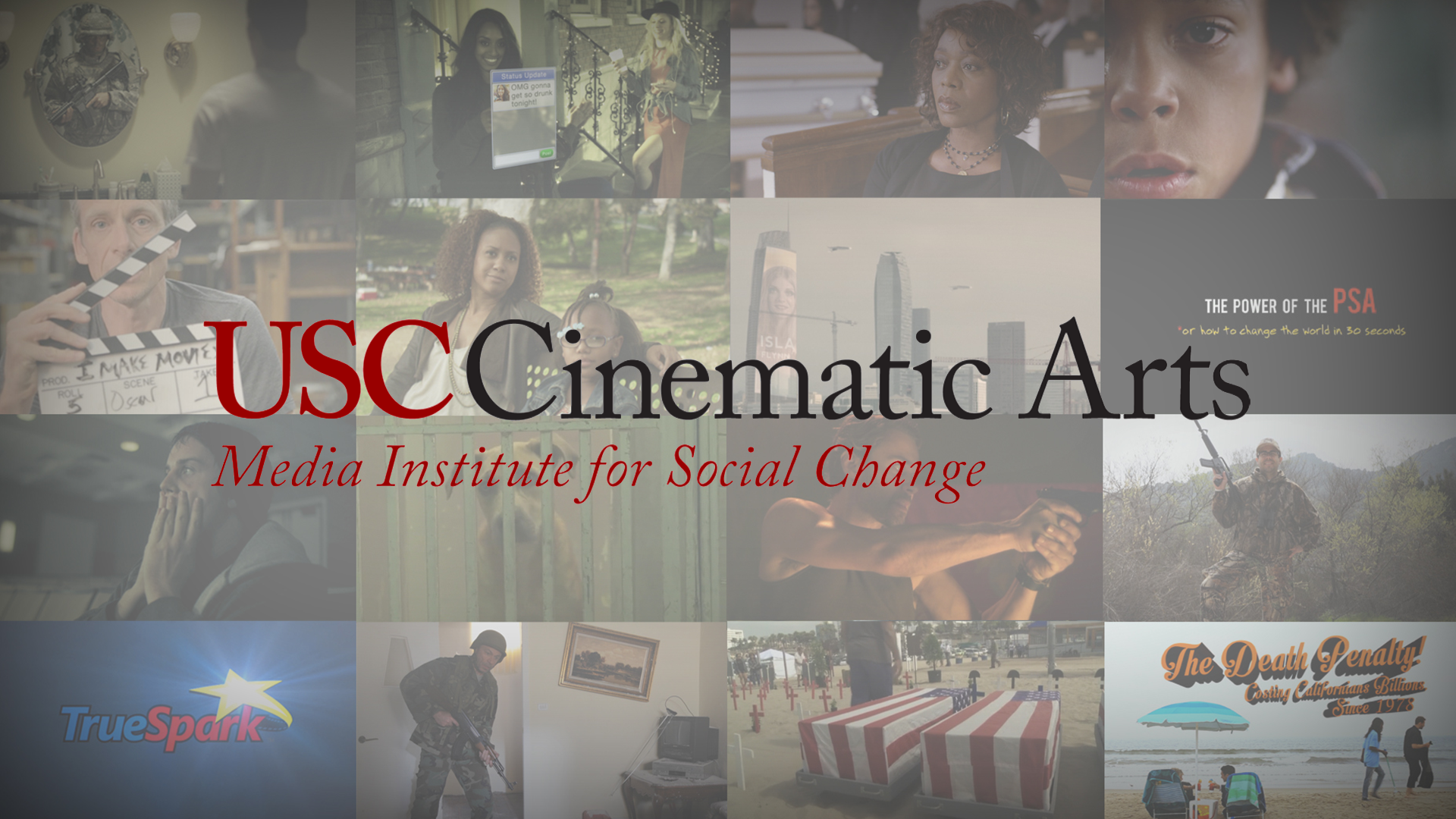
The Media Institute for Social Change, known as MISC, is a production and research institute at the USC School of Cinematic Arts focused on using media as a tool for effecting social change. Founded in 2013 by Michael Taylor, a producer and Professor in the School’s famed Film & Television Production Division, the MISC maxim is that “entertainment can change the world.” It spreads this message by producing illustrative content, and by mentoring student projects, awarding scholarships and leading research. “We are training the next generation of filmmakers to weave social issues into their films, television shows and video games,” says Taylor. “As creators the work we do has a huge impact on our culture and that gives us an opportunity to influence good outcomes.”
In recent years MISC has partnered with organizations including Save the Children, National Institutes of Health and Operation Gratitude, and creative companies like Giorgio Armani, the Motion Picture Association of America and FilmAid, to create groundbreaking work that have important social issues woven into the narrative. MISC also worked with USC’s Keck School of Medicine to create Big Data: Biomedicine a film that shows how crucial big data has become to creating breakthroughs in the medical world. Other MISC films include the upcoming The Interpreter, a short film centered on an Afghan interpreter who is hunted by the Taliban, and The Pamoja Project, the story of 3 Tanzanian women who determined to help their communities by immersing themselves in the worlds of microfinance, health and education. MISC has also partnered with the app KWIPPIT to create emojis that spread social messages. Together they co-hosted the Project Hope L.A. Benefit Concert to spread awareness about the massive uptick of homelessness in Los Angeles.
The Power of the PSA or How to Change the World in 30 Seconds, which documented the institute’s collaboration with the Los Angeles CBS affiliate KCAL9 to make PSAs on gun violence, internet safety, and PTSD among veterans. Another MISC-sponsored film, Lalo’s House, was shot in Haiti with the intention of exposing the child trafficking that is rampant there and in other countries, including the United States. The short film (which is being made into a feature) was used by UNICEF to encourage stricter legislation prohibiting the exploitation of minors, and has won several awards, including a Student Academy Award.
“Our goal,” says Taylor, “is to send our students into the industry with the skills and desire to make entertainment that has positive impact on our culture.” The dream is a variety of mass-media entertainment where social messages aren’t an afterthought but are central to the storytelling.
For more about MISC and its projects, go to uscmisc.org.
-
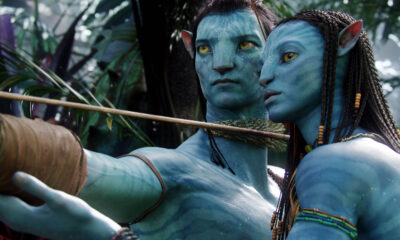
 SIE Magazine10 years ago
SIE Magazine10 years agoWhat Makes A Masterpiece and Blockbuster Work?
-
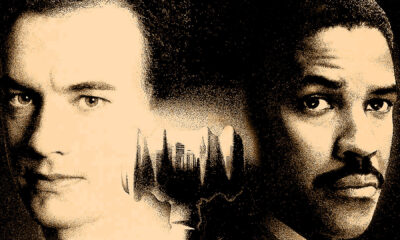
 Filmmakers10 years ago
Filmmakers10 years agoFilms That Changed The World: Philadelphia (1993)
-

 Companies7 years ago
Companies7 years agoSocial Impact Filmmaking: The How-To
-
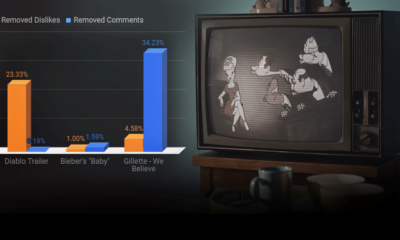
 Media Impact6 years ago
Media Impact6 years agoCan We Believe The Gillette Ad?
-

 SIE Magazine10 years ago
SIE Magazine10 years agoDie Welle and Lesson Plan: A Story Told Two Ways
-

 Academia9 years ago
Academia9 years agoFilmmaking Pitfalls in Deal-Making and Distribution
-

 Academia9 years ago
Academia9 years agoJoshua Oppenheimer: Why Filmmakers Shouldn’t Chase Impact
-

 Academia10 years ago
Academia10 years agoIMAX Documentaries: Exploring Our 7th Sense



